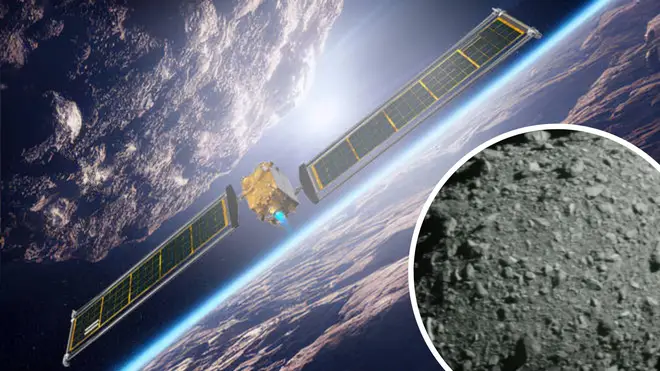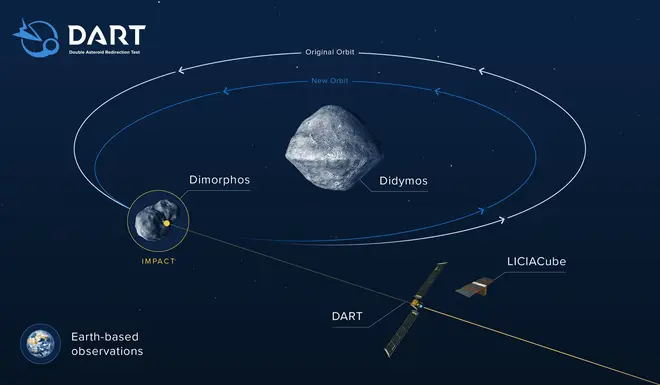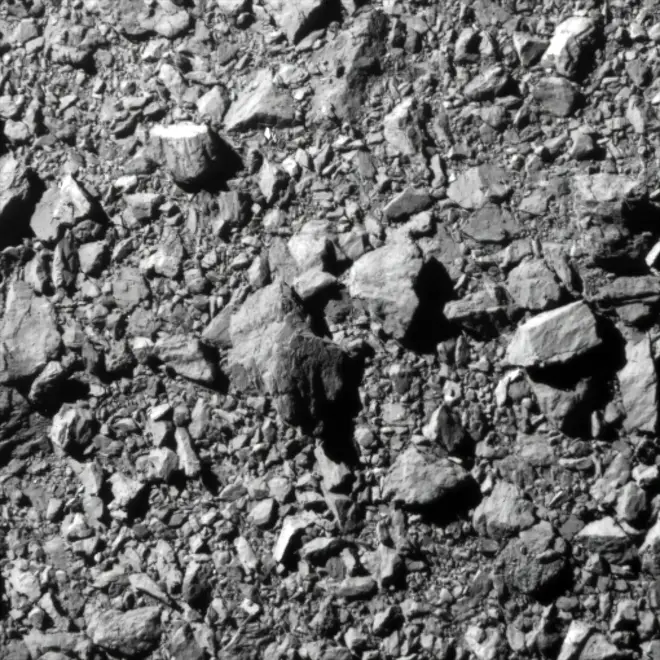
Vanessa Feltz 3pm - 6pm
11 October 2022, 21:29 | Updated: 12 October 2022, 02:12

A Nasa spacecraft has crashed into a small, harmless astroid millions of miles away and shifted its orbit in a "watershed moment" for planetary defence.
The astroid – named Dimorphos – posed no threat to Earth, but the the aim of the mission was to demonstrate that dangerous incoming rocks can be be deflected by smashing into them.
“IMPACT SUCCESS!” Nasa tweeted after its vending machine-sized spacecraft, known as Double Asteroid Redirection Test (Dart), collided with the astroid, which is the size of a football stadium.
The craft accelerated at about 13,700 miles per hour and destroyed itself in the process, but managed to shorten its orbital trajectory by around 32 minutes, telescope observations revealed.
"This is a watershed moment for planetary defence and a watershed moment for humanity," NASA chief Bill Nelson told reporters today as he announced the results of the September 26 crash.
Read more: Nasa aborts second attempt to launch 'world's most powerful rocket' after hydrogen leak

With somewhere around 27,000 astroids orbiting near earth, scientists are working on ways to deflect any heading directly for Earth.
Rocks that are 140 metres and larger in size and come nearer than 4.7 million miles during orbit are classed as potentially hazardous asteroids (PHAs).
Dimorphos is 170-meters wide, is part of a binary asteroid system and orbits Didymos, taking around 11 hours and 55 minutes to complete the circuit - before the collision that is.
The Dart mission was the first ever full-scale demonstration of asteroid deflection technology. In a video taken in the control room, a member of Nasa's team said: "And we have impact. A triumph for humanity in the name of planetary defence.”

In a live question-and-answer session after the crash, senior leaders from Nasa and Johns Hopkins Applied Physics Laboratory said the mission was “straight down the middle” and nothing went wrong.
The spacecraft was around 20 million miles from the Didymos and Dimorphos when it took photos of them in July - taking 10 months to come close to the targeted astroid after launching last November on SpaceX's Falcon 9 rocket.
The asteroids were around 6.8 million miles from Earth at the time of the collision, which was recorded by a briefcase-sized satellite known as the Light Italian CubeSat for Imaging of Asteroids (LICIACube).
Weighing just 14kg, LICIACube, provided by the Italian Space Agency, hitched a ride with Dart into deep space before recently separating from the spacecraft in a final farewell.
In 2024, the European Space Agency will launch its Hera spacecraft, which will go on a two-year journey to the asteroid system to gather information in the aftermath of the crash.
ESA said: “By the time Hera reaches Didymos, in 2026, Dimorphos will have achieved historic significance: the first object in the Solar System to have its orbit shifted by human effort in a measurable way.”